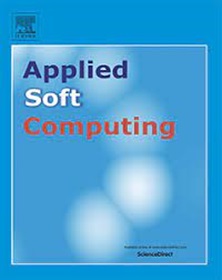Parallel graph neural architecture search optimization with incomplete features
IF 7.2
1区 计算机科学
Q1 COMPUTER SCIENCE, ARTIFICIAL INTELLIGENCE
引用次数: 0
Abstract
Graph neural networks (GNNs) have shown remarkable success in many fields. However, the results of different model architectures for different scenarios can be very different. Designing effective neural architectures requires a great deal of specialized knowledge, which limits the application of GNNs models. In recent years, graph neural architecture search (GNAS) has attracted widespread attention. GNAS selects the GNNs structure in predefined search space using a suitable search algorithm. The search direction is constrained based on the evaluation made by the estimation strategy. Traditional GNAS methods suffer from long search times, difficulty in parameter selection, and high sensitivity to data quality. When feature information is missing, the candidate architectures explored during the search process cannot obtain complete feature information, which significantly reduces the accuracy of GNAS. To tackle these challenges, we propose a novel optimization framework for parallel graph neural architecture search, named AutoPGO. In AutoPGO, we complement the features based on a feature propagation algorithm generated by minimizing the Dirichlet energy function, improve the search algorithm using the mutation decay strategy and complete the optimization of the parameters using the Bayesian optimization method. Experimental results show that AutoPGO has good performance and some degree of robustness.
具有不完全特征的并行图神经结构搜索优化
图神经网络(gnn)在许多领域都取得了显著的成功。然而,针对不同场景的不同模型体系结构的结果可能非常不同。设计有效的神经网络结构需要大量的专业知识,这限制了gnn模型的应用。近年来,图神经结构搜索(GNAS)引起了广泛的关注。GNAS使用合适的搜索算法在预定义的搜索空间中选择gnn结构。根据估计策略的评价约束搜索方向。传统的GNAS方法存在搜索时间长、参数选择困难、对数据质量敏感等问题。当特征信息缺失时,搜索过程中所探索的候选体系结构无法获得完整的特征信息,这大大降低了GNAS的准确性。为了解决这些挑战,我们提出了一种新的并行图神经架构搜索优化框架,称为AutoPGO。在AutoPGO中,我们基于Dirichlet能量函数最小化生成的特征传播算法对特征进行了补充,使用突变衰减策略改进了搜索算法,并使用贝叶斯优化方法完成了参数的优化。实验结果表明,该算法具有良好的性能和一定的鲁棒性。
本文章由计算机程序翻译,如有差异,请以英文原文为准。
求助全文
约1分钟内获得全文
求助全文
来源期刊

Applied Soft Computing
工程技术-计算机:跨学科应用
CiteScore
15.80
自引率
6.90%
发文量
874
审稿时长
10.9 months
期刊介绍:
Applied Soft Computing is an international journal promoting an integrated view of soft computing to solve real life problems.The focus is to publish the highest quality research in application and convergence of the areas of Fuzzy Logic, Neural Networks, Evolutionary Computing, Rough Sets and other similar techniques to address real world complexities.
Applied Soft Computing is a rolling publication: articles are published as soon as the editor-in-chief has accepted them. Therefore, the web site will continuously be updated with new articles and the publication time will be short.
 求助内容:
求助内容: 应助结果提醒方式:
应助结果提醒方式:


